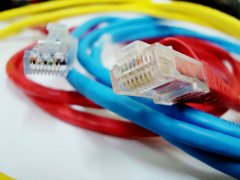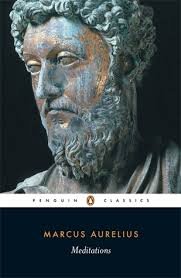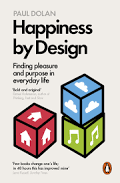 A post be @trainingtoteach on twitter got me thinking about what we mean by digital literacy. This instantly caused me problems as it covers a rather broad spectrum. As a result I decided to write this post in the hope of gaining some insight in thinking about digital literacy and trying to type up this post.
A post be @trainingtoteach on twitter got me thinking about what we mean by digital literacy. This instantly caused me problems as it covers a rather broad spectrum. As a result I decided to write this post in the hope of gaining some insight in thinking about digital literacy and trying to type up this post.
My first thoughts on “what is” digital literacy weren’t really getting me far so I decided to take a slightly different approach. I decided to approach it from the other side of things and what is NOT digitally literate.
Not being digitally literate would involve being unable to make use of digital technologies. By this I don’t mean being unable to make use of specific apps but being unable to make use of technology to solve a specific need or problem. I think the need for a problem or a task is key as we don’t just use technology, we use it for a purpose.
Giving some consideration to what the problems might be and communicating with others, research, managing ourselves and others (e.g. online calendars and productivity tools), creating content to meet a specific need and modifying or combining existing content to create new content all jump to mind. This seems to align a little bit with the so called 21st century skills. I suspect with more time I could arrive at more problems or better define them however the focus of this post is on what it is to be digitally literate.
When encountering a problem we first need to be able to identify that technology could help us. Someone who isn’t digitally literate may be unable to arrive at this conclusion. Next a non-digitally literate person, upon realising technology can help, may not know what tools to use. A person who is not digitally literate would be unable to progress from here as they would know little of the available tools plus be unable to carry out research to identify tools that would be able to help. They would also lack the ability to use communication and collaboration tools such as twitter, email, etc. to ask others for support. Even if they can identify tools they may have difficult in identifying the best tool for the given situation. They would lack the knowledge, understanding and skills required in identifying what technologies tools to use as well as why a specific tool is the best option.
Assuming a person manages to get past the first phase and identifies appropriate software and hardware the next phase would be to make use of the technology to solve the issue at hand. A person who was not digitally literate may be unable to use the tools at hand. They would lack the skills and experience. They would also be unable to use research tools, etc. to try and learn a new tool. They wouldn’t be able to use trial and error or intuition and the hopefully appropriately designed user interface. How to use the technology would present a problem.
Another area a non-digitally literate person would have difficulty with would be finding and creating resources. They wouldn’t know where to find images or audio files for use and would also have difficulty with creating their own files.
The issue with resources brings me nicely to another area where the non-digitally literate user would have difficulty. They wouldn’t understand the implications of using resources from other users. They wouldn’t understand copyright or licensing including creative commons licensing. The failure to understand implications of technology use would likely extend beyond just copyright into areas such as online safety and privacy. They may not understand the implications of posting a personal image on Facebook with poor privacy settings.
So being non-digital literate is not knowing what do use, why to use and/or how to use it. It is also not understanding the implications of technology use. I cant help thinking that this isn’t any different from having the skills and experience to use any tool, technological or not. If I am a tradesperson do I not need to know which tool to use and when. Do I not need to have the skills to use it and an understanding of the implications of its use? When we talk about language literacy are we not talking about using the correct terms, syntax, etc. and therefore knowing what, why and how to use the tool of language, along with the implications?
So why are discussions of digital literacy so complex?


 Yesterday afternoon while sat at home I suddenly started to experience internet issues, with my routers connection being intermittently lost. I immediately carried out the usual checks to see if I could identify the issue however nothing on the internal network at home seemed to be amiss. As such it was time to call my network provider to ask them to look into the situation.
Yesterday afternoon while sat at home I suddenly started to experience internet issues, with my routers connection being intermittently lost. I immediately carried out the usual checks to see if I could identify the issue however nothing on the internal network at home seemed to be amiss. As such it was time to call my network provider to ask them to look into the situation. One of my areas which I want to work on over the next year will be that of Management Information. In my school as in almost all schools we have a Management Information System (MIS), sometimes referred to as a SIS (School or Student Information System). This systems stores a large amount of student data including info on their performance as measured by assessments or by teacher professional judgement. We also have data either coming from or stored in other data sources such as GL or CEM in relation to baseline data. These represent the tip of the iceberg in terms of the data stored or at least available to schools and their staff.
One of my areas which I want to work on over the next year will be that of Management Information. In my school as in almost all schools we have a Management Information System (MIS), sometimes referred to as a SIS (School or Student Information System). This systems stores a large amount of student data including info on their performance as measured by assessments or by teacher professional judgement. We also have data either coming from or stored in other data sources such as GL or CEM in relation to baseline data. These represent the tip of the iceberg in terms of the data stored or at least available to schools and their staff. When I wrote my resolutions I listed a need for mindfulness including an awareness of my emotional state, however I don’t think I fully appreciated the importance of this aspect of life. My recent reading of Meditations by Marcus Aurelius and also The Obstacle is the way by Ryan Holiday have both further brought this into focus. Our reality is viewed through the lens of our perception, therefore if we take a more optimistic view, if we focus on what is in our control, then we can bring about a more positive reality. With this in mind I think I have made some progress, for realisation is a step in itself. This however will need to be something which I continue to consider, and to revisit.
When I wrote my resolutions I listed a need for mindfulness including an awareness of my emotional state, however I don’t think I fully appreciated the importance of this aspect of life. My recent reading of Meditations by Marcus Aurelius and also The Obstacle is the way by Ryan Holiday have both further brought this into focus. Our reality is viewed through the lens of our perception, therefore if we take a more optimistic view, if we focus on what is in our control, then we can bring about a more positive reality. With this in mind I think I have made some progress, for realisation is a step in itself. This however will need to be something which I continue to consider, and to revisit. My current book which I am reading is Happiness by Design by Paul Dolan. I think it will be interesting to revisit my reflections having completed reading this as it has already raised some interesting ideas in relation to pleasure and purpose. At this point I think I am more of a busy, or purposeful, person. Am not sure yet whether this is a good thing or not.
My current book which I am reading is Happiness by Design by Paul Dolan. I think it will be interesting to revisit my reflections having completed reading this as it has already raised some interesting ideas in relation to pleasure and purpose. At this point I think I am more of a busy, or purposeful, person. Am not sure yet whether this is a good thing or not. There are almost always two sides to technology. In a post from a few months ago I cast a rather negative viewpoint on the use of cameras, in this case teacher body mounted cameras, in the classroom (You can read the post
There are almost always two sides to technology. In a post from a few months ago I cast a rather negative viewpoint on the use of cameras, in this case teacher body mounted cameras, in the classroom (You can read the post